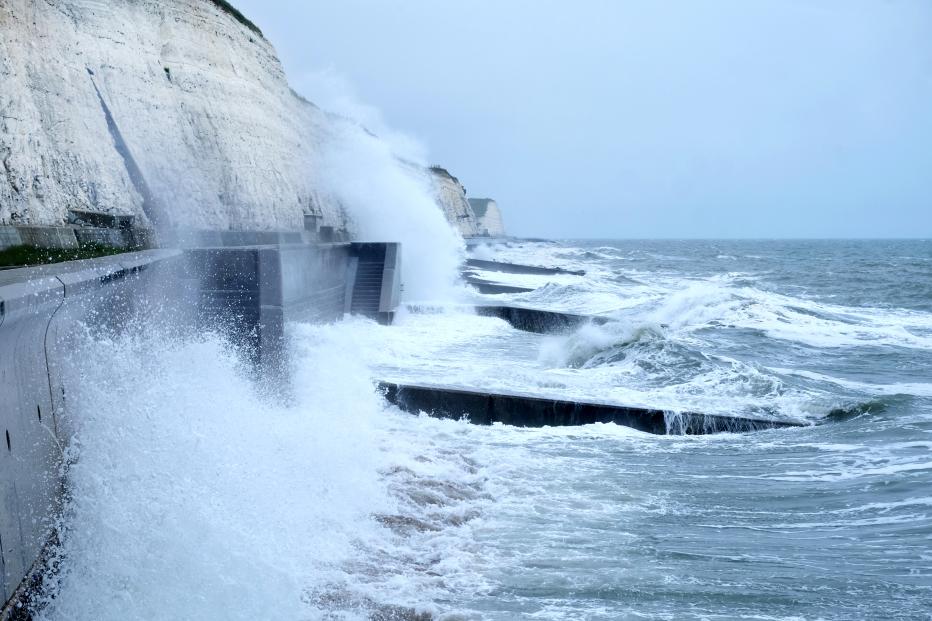



Jacobs. A world where you can.



As climate change threatens water security around the world, more communities are turning to water reuse as a resilient water supply solution and embracing the OneWater principle that all water has value. Jacobs has been supporting clients with water reuse programs for decades, beginning with the first applications of advanced wastewater treatment technologies in the 1960s. We provide our clients with a full range of services, from water reuse feasibility studies to design, construction and operations.



We’ve provided design-build services to the water sector for over 25 years and delivered more than 150 projects. We offer fully integrated design-build and design-build-operate capabilities to tackle the most complex water challenges and work in close collaboration with our clients.



For more than 30 years, Jacobs has been responsible for planning and implementing Lead and Copper Rule-related strategies which protect millions of people in the U.S. and Canada. Our work includes enhanced water quality monitoring strategies, sampling plan development, harvested pipe-scale analysis, lead service line inventories and replacement plans, corrosion control studies and the incorporation of equity and environmental justice considerations into compliance programs.



A curated selection of some of the top-listened to and trending podcast episodes from our popular If/When podcast series.



As a purpose-led company, we know we have a pivotal role to play in addressing the climate emergency. We consider this not only good business, but our duty to channel our technology-enabled expertise and capabilities toward benefitting people and the planet.



We work in partnership, delivering some of the most challenging, diverse and innovative projects and programs globally across multiple sectors. We integrate complex interfaces across planning, procurement and delivery to help unlock better social, environmental and economic outcomes from mega and giga projects.



As our clients navigate the digital transformation and growing cyber risks, we have positioned ourselves at the forefront of this growth, adding digital capabilities, products and tools to serve a growing set of customers.



Sit down with our visionary team of thinkers, dreamers and doers to see what a day in the life is like.



Together with our visionary partner, PA Consulting, we're establishing our position in high end advisory services, creating a springboard to expand in high value offerings beyond the core.


At Jacobs, we're challenging today to reinvent tomorrow by solving the world's most critical problems for thriving cities, resilient environments, mission-critical outcomes, operational advancement, scientific discovery and cutting-edge manufacturing, turning abstract ideas into realities that transform the world for good. With approximately $16 billion in annual revenue and a talent force of more than 60,000, Jacobs provides a full spectrum of professional services including consulting, technical, scientific and project delivery for the government and private sector.



The only certainty about the future is uncertainty. Resilience is an attribute of a smarter planet, and requires planning and adapting ahead of potential threats. We help our clients survive, recover, adapt and thrive.



Jacobs is working to help clients across the United States secure federal funding for projects that make our cities and communities more connected and sustainable. Working hand-in-hand with clients from coast to coast and everywhere in between, Jacobs develops bold, innovative solutions to address the nation’s toughest challenges.



Now more than ever, we appreciate the hard work, sacrifice and dedication of the medical profession in ensuring the health and safety of our communities.



Together, we are stronger. Together, we can transform the future.



Stories that capture our partnerships and innovative impact for a more connected, sustainable world



A recent review of carbon associated with delivery of flood risk management schemes showed that concrete represents over half of the construction carbon footprint on Environment Agency projects. The research study by Jacobs and supply chain partners on behalf of the Environment Agency summarized the current carbon impacts of concrete and its use in the U.K., investigated alternatives, and provided recommendations for reducing the associated carbon footprint.
At the start of the study, although there was an industry-wide drive to reduce carbon emissions from concrete, there wasn’t a wide strategy for the fast and effective decarbonization of concrete use. Individual organizations have set different targets, and emission reductions are achieved through diverse initiatives. Our report is a compendium of industry-wide research and new products available in the U.K. with a focus on the opportunities to reduce carbon in the use of concrete, steel reinforcement and other materials.
Results of our research and impact on the industry
Within the constraints of the current standards in the U.K. for traditional concrete mix components and experience in its use, the research reports the possibility for reducing the carbon footprint through the increased use of secondary cementitious materials (SCM) replacements in existing standard mixes. While this will help reduce carbon emissions, there are alternative products with much lower carbon impacts than traditional mixes.
These novel, ultra-low concretes don’t currently fall within the specifications of BS8500 – the British Standard for specifying and producing concrete, though work is ongoing to demonstrate adequate performance with a view to updating the standards soon.
To help reduce carbon associated with concrete, Jacobs worked with the Environment Agency to develop a risk-based approach to adopt new non-code compliant, concrete technologies in its assets where appropriate. The report suggested blockers to the use of new technology. It also developed approaches to target-setting, design guidance, decision-making processes, specific advice on risk management, wider engagement, and creating an environment that delivers innovation and change through engagement with the supply chain.
Working together, the Environment Agency, Jacobs and the Agency’s supply chain partners are progressing the recommendations for implementation. The Environment Agency has set up a nationwide low-carbon concrete Community of Practice to implement the changes to the specification, oversee project-based trials to further knowledge of the non-code compliant, ultra-low concrete and reinforcement alternatives, and liaise with suppliers, academics and other significant clients across the industry. The Community of Practice will also link into low-carbon initiatives with trade bodies such as the Infrastructure Industry Innovation Partnership (i3P), the Concrete Society and the Major Projects Authority to further the knowledge and understanding of these new products, help speed up widespread adoption and bring them within standards.
It is great to see an industry-wide approach emerging through the Green Construction Board's Low Carbon Concrete Group’s Low Carbon Concrete Routemap, recently launched. The Routemap examines how the infrastructure industry can use the latest tools, technologies and materials to continue using concrete while working towards a zero-carbon future. It makes wide-ranging recommendations for clients and industry in eight succinct strands, each forming a chapter of the full report.
The study has been recognized with the British Construction Industry award for the Carbon Net Zero Initiative of the Year.
“This is an important piece of research, which resulted in an update to the Environment Agency’s work specifications to drive designers and suppliers to use the lowest carbon concrete possible. ”
Phil Marsh
Jacobs’ People and Places Solutions Europe Project Manager
“This is an important piece of research, which resulted in an update to the Environment Agency’s work specifications to drive designers and suppliers to use the lowest carbon concrete possible,” said Jacobs’ People and Places Solutions Europe Project Manager Phil Marsh. “The Community of Practice, set up as a result, will aim to disseminate best practice on minimizing carbon associated with concrete.”
“This research led to changes to Environment Agency technical standards requiring that the lowest carbon concrete meeting performance requirements are used on all Environment Agency schemes going forward,” said Environment Agency Innovation Manager Andrew Powell. “We are running a program of trials of ultra-low carbon concretes and alternative reinforcement, working with the whole of the value chain, to investigate and understand the practical use of new, innovative materials. This will help us meet our Net Zero Carbon target and continue to drive best practice and innovation in the industry.”
“We are running a program of trials of ultra-low carbon concretes and alternative reinforcement, working with the whole of the value chain, to investigate and understand the practical use of new, innovative materials. ”
Andrew Powell
Environment Agency Innovation Manager
Commitment to net zero pathways
Jacobs is committed to providing a net zero pathway for both its business and its clients. Through its first Climate Action Plan, Jacobs achieved its climate commitments in 2020 becoming carbon neutral for its operations and business travel and adopting 100% low-carbon electricity. Launching later this month, the company’s new Climate Action Plan will set out new commitments to climate response. Jacobs’ sustainable business approach, PlanBeyond 2.0, integrates environmental, social and governance considerations into the company’s operations, and also into the hearts and minds of every employee and every client solution delivered.
The Environment Agency has set itself the aim of becoming a net zero organization by 2030 – ensuring that its own activities and supply chain are taking as much carbon out of the atmosphere as they are putting into it. It will seek to meet the goal by reducing the emissions of its own activities and supply chain by at least 45%; and offsetting the rest through schemes that harmlessly lock away carbon while bringing added benefits for people and nature, such as reducing flood risk and creating new habitats. Environment Agency will also explore whether it could become an absolute zero organization – eliminating all carbon emissions from its own activities and its supply chain – by 2050. This will put the organization at the forefront of tackling the climate emergency through eliminating its own emissions while continuing to protect communities and create more climate-resilient places.

Reducing emissions and reaching “net zero” on a global level has been – and will continue to be – one of the world’s largest and most pressing challenges in the coming decades.

In this session, we examine the value chain elements from the technology sector and discuss the challenges and opportunities in the transition to a net-zero future. Technology impacts all sectors of the economy and is integral to everyday life for people and businesses worldwide. It is a sector that has continued to yield exponential growth while committing to the most ambitious corporate climate targets. In this Climate Week NYC webinar, we hear from several players within this value chain, with speakers from Microsoft, Western Digital and Jacobs talking about their call to action and the decarbonization of the value chain.


Carbon captured by coastal ecosystems such as saltmarshes, referred to as “blue carbon”, provides a natural way of reducing the impact of greenhouse gases on our atmosphere.


In recent years, the world’s collective understanding of climate change, how it will impact all parts of society and what must be done to respond to current and future threats has developed enormously.


Jacobs ups the ante by unveiling its global sustainable business approach, PlanBeyondSM 2.0 — delivering beyond the company's purpose to create a more connected, sustainable world. The enhanced plan is Jacobs' companywide foundation for what sustainability means to its clients and the planet — propelling the integration of sustainability throughout operations and client solutions in alignment with the United Nations Sustainable Development Goals (SDGs).